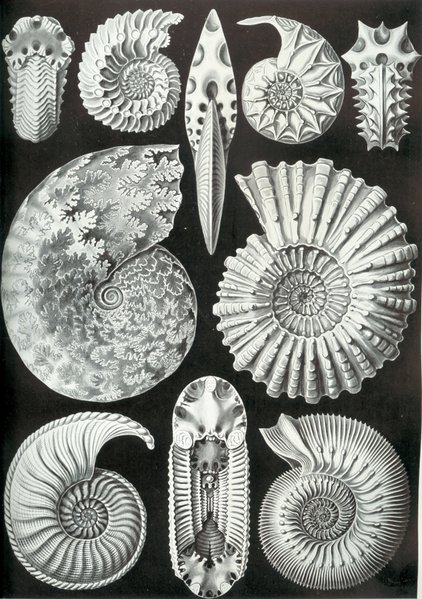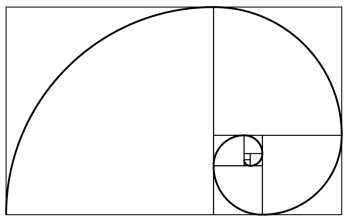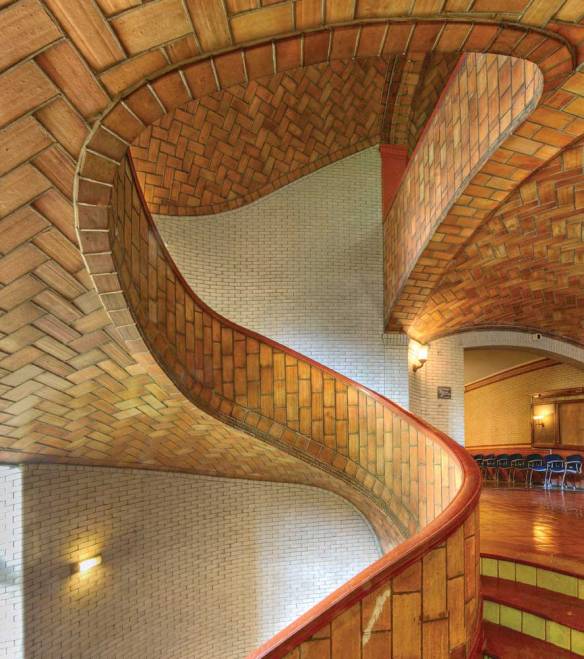 It is Winter now, but Spring is right around the corner. Looking back at this picture of a tulip, unfurling from the ground in front of my house a few Aprils ago, got me thinking about spirals.
It is Winter now, but Spring is right around the corner. Looking back at this picture of a tulip, unfurling from the ground in front of my house a few Aprils ago, got me thinking about spirals.
Many living things, both plants and animals, share this form in their growth patterns. 
This plate from Art Forms of Nature by German biologist Ernst Haeckel shows examples of ancient Ammonitida shells. I marvel at their complexity and perfection.
No less amazing is M74, the Perfect Spiral Galaxy, a spectacular example of a “grand design spiral galaxy.”
Fibonacci numbers describe these spiral phenomena mathematically.
There are many works of architecture based on the spiral, from whole buildings to details, to spiral staircases.
There is a special spiral staircase in Baker Hall, at my alma mater, Carnegie-Mellon University (CMU), built with nothing but layered thin Terra-cotta tiles, as a variation of timbrel vault type of construction.
It supports itself without a steel armature, posts or beams. The sinuous gentle curve is gorgeous. The a herringbone tile pattern along the curved underside is one of three layers of tile adhered together with fast-setting mortar. The resulting laminated shell is almost as strong as reinforced concrete.
It was built by the company of a Spanish master builder, Rafael Guastavino, who excelled at designing and building timbrel arches, vaults, and spiral stairs. Guastavino structures, unlike Roman arches and vaults, don’t require heavy wooden supports (centering) during their construction. “The Guastavino craftsmen could start at the four walls of a room and build toward the center. The masons could stand on a ladder or a platform, but they didn’t have to build a wooden frame to support their structure while it was being built—it almost seems miraculous…We have a difficult time today calculating the geometries of (this) structure. I have students here at MIT doing doctoral research, trying to understand how these structures stand up. We can’t build this staircase today.””
The above quote is from MIT structures Professor John Ochsendorf in “Vaulting Ambition,” by Craig Lambert, in Humanities Magazine, a great article that explores the Guastavino’s history, work and influence.
There is an upcoming exhibit in the National Building Museum, called Palaces for the People: Guastavino and America’s Great Public Spaces, which will be on view from March 16, 2013 to January 20, 2014. I hope to get a chance to see it.
The first photo is mine; the second photo is courtesy of Wikimedia Commons; the third photo is courtesy of NASA; the fourth photo is courtesy of Wikipedia; and the fifth photo is courtesy of Michael Freeman.
Feel free to share the content of this blog, but please provide a link back to 2H Pencil.
I invite your comments.



